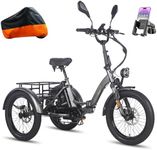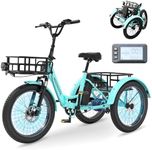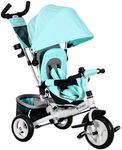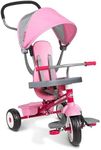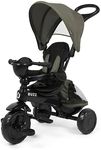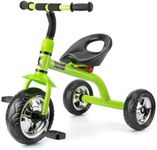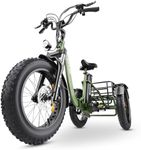Buying Guide for the Best Electric Trikes
Electric trikes, or electric tricycles, are a fantastic option for those seeking a stable, eco-friendly, and convenient mode of transportation. They are particularly popular among seniors, individuals with balance issues, or anyone who prefers a more stable ride than a traditional bicycle. When choosing an electric trike, it's important to consider various specifications that will affect your riding experience, such as motor power, battery life, and weight capacity. Understanding these specs will help you select a trike that best fits your lifestyle and needs.Motor PowerMotor power in electric trikes is measured in watts and determines how much assistance the motor provides when pedaling. This is important because it affects the trike's ability to handle different terrains and inclines. Motor power typically ranges from 250 watts to 750 watts. Lower power motors (250-350 watts) are suitable for flat terrains and casual riding, while higher power motors (500-750 watts) are better for hilly areas or carrying heavier loads. Consider your typical riding environment and choose a motor power that will provide adequate support.
Battery LifeBattery life indicates how far you can travel on a single charge and is usually measured in amp-hours (Ah) or watt-hours (Wh). This is crucial for planning your trips and ensuring you don't run out of power mid-ride. Batteries can range from 10Ah to 20Ah or more. A lower capacity battery (10-12Ah) might suffice for short, infrequent rides, while a higher capacity battery (15-20Ah) is better for longer commutes or frequent use. Consider your typical travel distance and frequency to determine the right battery life for you.
Weight CapacityWeight capacity refers to the maximum load the trike can safely carry, including the rider and any cargo. This is important for safety and performance, as exceeding the weight limit can affect the trike's stability and motor efficiency. Weight capacities typically range from 250 to 400 pounds. If you plan to carry additional items like groceries or gear, or if you are on the heavier side, opt for a trike with a higher weight capacity to ensure a safe and comfortable ride.
Frame MaterialThe frame material of an electric trike affects its durability, weight, and cost. Common materials include steel, aluminum, and carbon fiber. Steel frames are strong and durable but heavier, making them suitable for those who prioritize strength over portability. Aluminum frames are lighter and resistant to rust, offering a good balance between weight and durability. Carbon fiber frames are the lightest and most expensive, ideal for those who need a lightweight trike for easy transport. Consider how you plan to use the trike and choose a frame material that aligns with your priorities.
Wheel SizeWheel size impacts the trike's stability, speed, and comfort. Larger wheels (24-26 inches) provide a smoother ride and are better for covering longer distances, while smaller wheels (20 inches) offer more maneuverability and are easier to store. If you plan to ride on rough or uneven surfaces, larger wheels might be more suitable. For city riding or if storage space is limited, smaller wheels could be a better fit. Think about where you'll be riding most often to decide on the appropriate wheel size.
